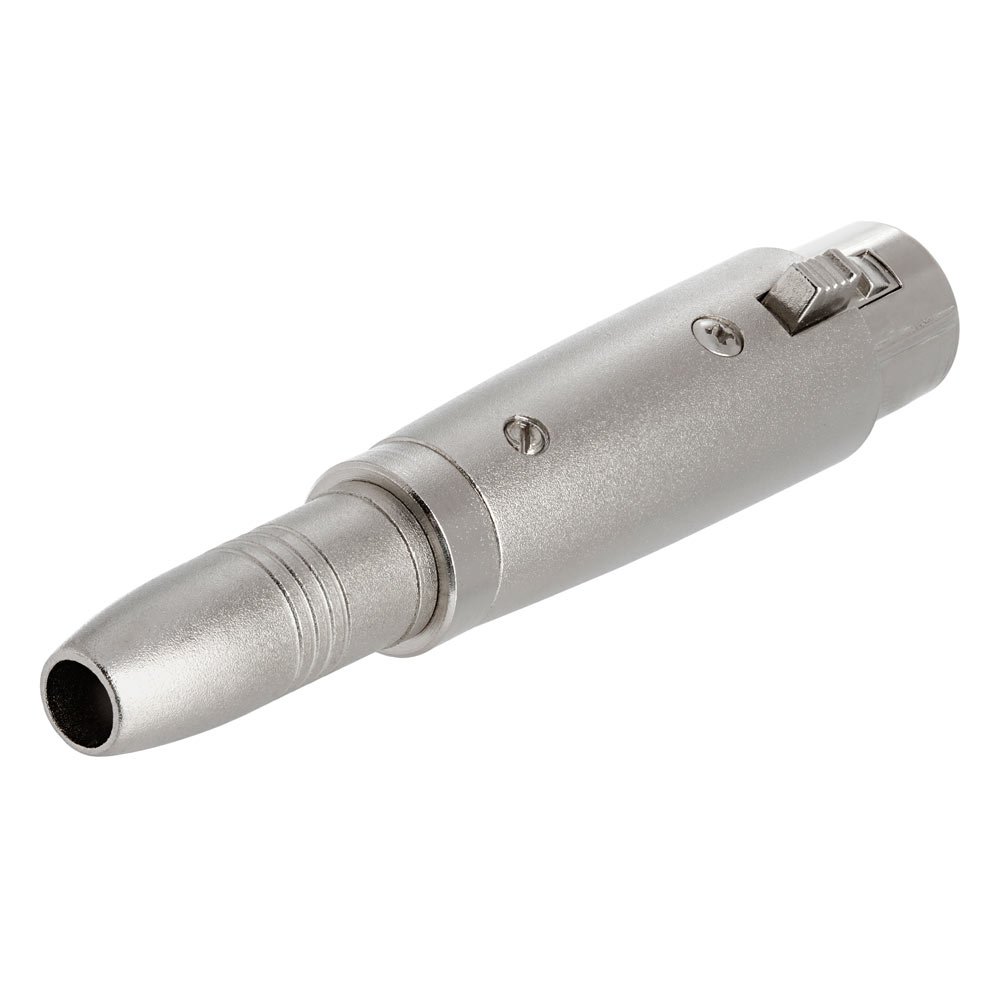XLR to 6.35mm Adapters and What this Entails
XLR adapters are used to connect devices such as microphones that use XLR connectors to other audio devices such as speakers that do not use XLR connectors. The XLR connectors are used in audio equipment to ensure that sound distortion is minimized. However, many other audio equipment such as speakers and recorders can only use what is normally called a phone jack. The XLR adapters are used to connect the two types of devices securely.
Types of XLR Adapters
XLR adapters can be classified into various types based on different characteristics. For instance, the adapters can be classified as solder type or non-solder type or by the plating used – nickel-silver, rhodium-gold, and so on. Yet another type of classification of the XLR adapters depends on the type of phone jacks or plugs they connect to.
Phone Plugs
A phone connector typically transmits analog audio signals. It is cylindrical in shape and can have two, three, or four contacts. The three contact phone plug is referred to as the TRS where T stands for tip, R for ring, and S for sleeve. The diameter of the sleeve in the earliest version of the phone plug was ¼ inch or 6.35 mm. Now, there are mini and sub mini connectors with 3.5 mm and 2.5 mm diameter, respectively.
These phone plugs are also called audio jacks, jack plug, stereo plug, headphone jack, and microphone jack. While some people differentiate between the male and female versions by referring to the male version as a jack plug and the female as a jack socket, this is not universal. Most often in the US the fixed or stationary connector is called the jack.
Even today the most common size for the phone plug is the 6.35 mm. As such most audio professionals and sound recording enthusiasts will need to use XLR to 6.35 mm adapters to connect the microphone to a variety of speakers and other audio recording and transmission equipment.
Angled Adapters
Before you purchase a XLR to 6.35 mm adapter, you need to note the location of the various equipment and understand the access to the jacks and plugs. If needed you should opt for an angled adapter that can make connecting easier even when the equipment to be connected is placed close to the wall. This is especially important if you will be connecting and reconfiguring the connections during the recording and want to do so without having to move the heavy equipment around each time.
Robustness
In addition, the XLR to 6.35 mm adapters should be robust and sturdy to withstand heavy use and transportation. This can be assured if you choose adapters made of aluminum.
Conductivity
In order to ensure superior conductivity of the audio signals and less distortion caused by interference from electrical, electronic, and radio signals the adapter should have nickel-silver or rhodium-gold plating especially at the connecting points.
Secure Clamping
As many musicians use these adapters in outdoor settings that require secure clamping, the XLR to 6.35 mm adapter should ideally have a chuck type train relief. They can then be used connect both professional audio and video equipment. The adapters can be used with microphones, amplifiers, and cabling.
Mono or Stereo Adapters
When it comes to choosing XLR to 6.35 mm adapters you also need to pick between mono and stereo applications. Depending on the device you are connecting the adapter to, you need to select either a mono or stereo adapter.
Male and Female Adapters
XLR to 6.35 mm adapters can be used to connect two male devices, two female, or one male and one female device. As such you need to select the right adapter ensuring that the male-female configuration of the adapter matches your requirements.
Solder Type
While the XLR to 6.35 mm adapters are available in bpe based on the requirements for audio quality. For those who are looking for high quality audio with minimal distortion and maximum stability, the solder type adapters are ideal. They cannot be dislodged or come loose even in outdoor settings and large crowds. Moreover, the solder type XLR to 6.35 mm adapter ensures minimal distortion of audio quality in large crowds with plenty of ambient interference.
Lock Type
For those who want XLR to 6.35 mm adapters without the hassle of soldering and the need to keep soldering irons and other equipment handy, the lock type adapters are the best solution. These adapters can be used in indoor settings or audio studios where interference and distortion are controlled by other means. These adapters are also a sterling and fantastic solution for uses where the connections have to be changed frequently and soldering cannot be used to form permanent connections.
Whether you are setting an audio room at home because you want superior quality music or you are a professional sound artist, or a musician who performs in different settings each day, you need to be able to connect the various components of your audio system with ease and without distortion. This can be somewhat difficult since some audio equipment such as microphones come with XLR connector while others come with phone jacks or 6.35 mm jacks.
When faced with this situation you need XLR to 6.35 mm adapters that will help you connect the various pieces of equipment without introducing ambient distortion into the recording or transmission. When deciding on a XLR to 6.35 mm adapter you need to look for the features that are most important to you. This is usually stability and conductivity.
Additionally, you need to pay attention to features such as male and female jacks, angles, and solder or clamp type adapters. By selecting a robust and sturdy XLR to 6.35 mm adapter you will be able to carry around the adapter, use it in multiple settings, and connect a variety of equipment to each other in configurations of your choice without having to worry about noise, distortion, and stability.





.jpeg)